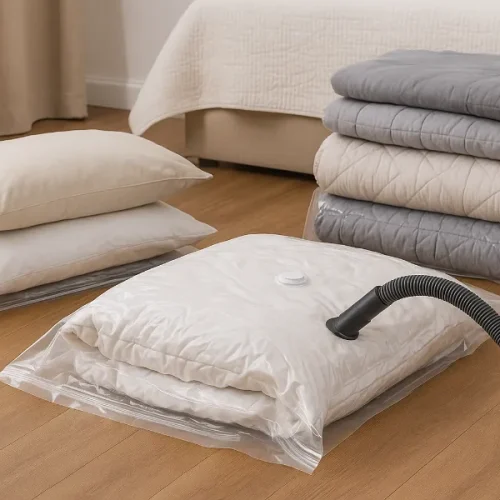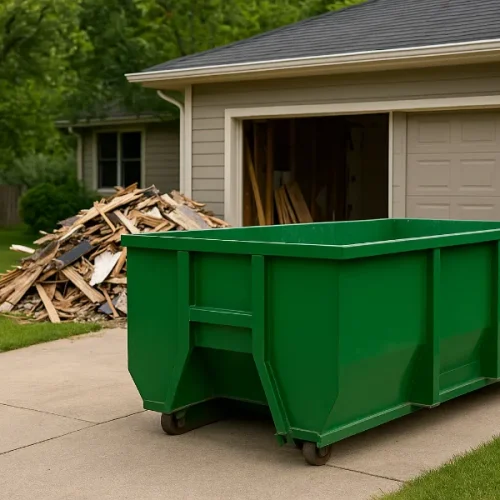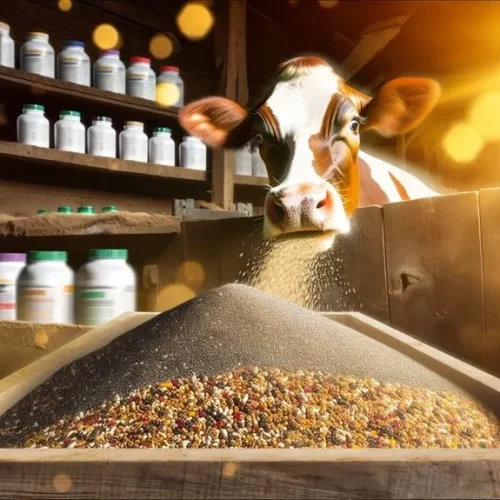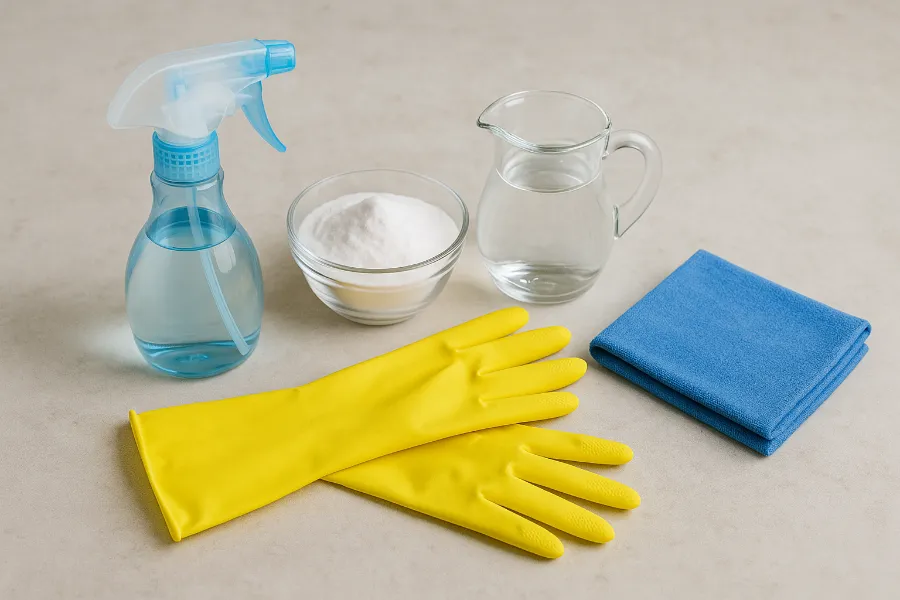
If you’re serious about eating healthy, then cleaning fruit with baking soda should be part of your kitchen routine. We all love a crisp apple or a handful of fresh berries, but what about the pesticides, dirt, and invisible residues that cling to the surface? A quick rinse under the tap might make fruit look clean, but science shows it’s not nearly enough. That’s where baking soda steps in. Cheap, safe, and already sitting in most pantries, it’s surprisingly effective at removing dirt and even certain pesticides from produce. Let’s dive into why this method works, how to do it properly, and whether it’s truly worth the effort.
Why Baking Soda Works on Fruit
Baking soda, also known as sodium bicarbonate, is mildly alkaline. This alkalinity helps break down certain chemical residues on fruit skins. When dissolved in water, baking soda can loosen pesticide molecules, waxes, and grime that plain water struggles to remove.
In fact, studies from the University of Massachusetts found that soaking apples in a baking soda solution for 12–15 minutes removed up to 96–99% of pesticide residues—far outperforming just rinsing with water. That’s a big deal when you think about how often apples, grapes, and strawberries appear on the Environmental Working Group’s “Dirty Dozen” list.
So, the science checks out. Baking soda doesn’t just scrub away surface dirt—it alters pesticide molecules, making them easier to wash away.
Step-by-Step: How to Clean Fruit with Baking Soda
Here’s the simple, foolproof way to use baking soda for cleaner, safer fruit:
1. Start Clean
Wash your hands thoroughly, and if you’re using the sink to soak your fruit, give it a rinse first. Contaminating clean fruit with a dirty sink defeats the purpose.
2. Mix the Solution
You don’t need much. The standard ratio is 1 teaspoon of baking soda per 2 cups of water. If you’re cleaning a full sink of produce, use about 3–4 tablespoons per sink filled with water.
For smaller bowls, stick to the teaspoon measurement—it’s surprisingly effective.
3. Soak the Fruit
Submerge the fruit and let it sit for 12 to 15 minutes. This is the sweet spot where studies show maximum pesticide removal. For sturdier fruits like apples, pears, and melons, you can also gently scrub the surface with your hands or a soft brush.
Avoid scrubbing delicate fruit like berries, which can bruise easily. For those, a gentle soak is best.
4. Rinse and Dry
After soaking, rinse the fruit under cool running water to wash off both the baking soda and loosened residues. Then, dry the fruit before storing. Storing damp fruit invites mold.
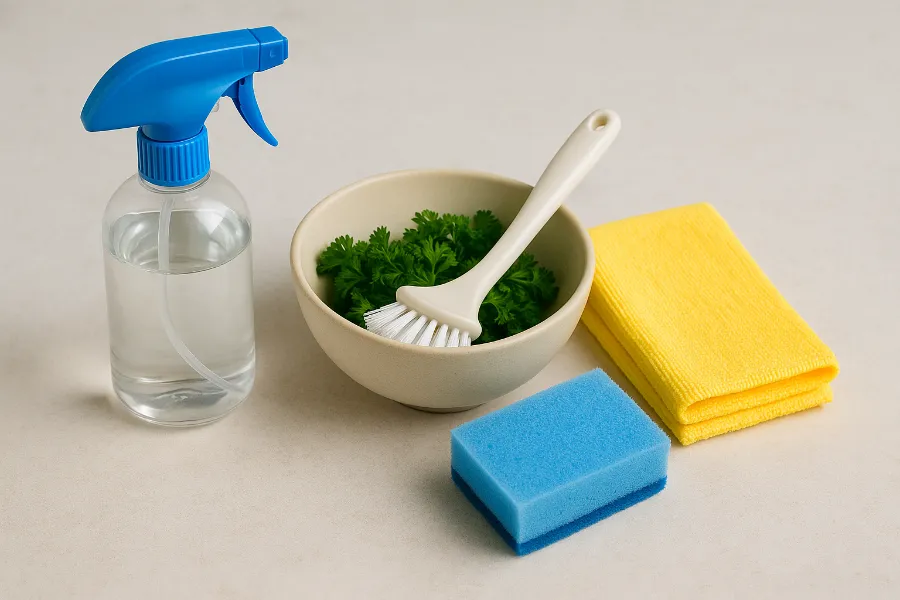
Does Baking Soda Really Remove Pesticides?
The USDA routinely tests produce for pesticide residues, and their reports show that even after washing, many fruits still carry trace levels. Baking soda won’t magically eliminate all residues, but it dramatically reduces the load compared to just running fruit under the tap.
It’s also worth noting that baking soda is especially effective on produce with firmer skins, like apples, cucumbers, and melons. For thin-skinned fruits like grapes and berries, it still helps but won’t be quite as powerful.
In short: baking soda is one of the best home-friendly ways to reduce pesticide exposure, but it’s not a total guarantee of residue-free fruit.
Other Options for Washing Fruit
While baking soda is one of the most researched and effective methods, it’s not your only option. Here’s how it compares to other cleaning approaches:
- Plain Water: Better than nothing, but far less effective for pesticide removal. It mainly helps with dirt and dust.
- Vinegar Solutions: Some people swear by vinegar soaks for both pesticides and mold prevention. Vinegar can help, but studies suggest baking soda performs better.
- Lemon Juice and Essential Oils: These can help extend shelf life by reducing mold but aren’t as well-studied for pesticide removal.
- Commercial Fruit Washes: Often marketed as “produce cleaners,” these aren’t well regulated. FDA research shows they don’t outperform water and baking soda.
Ultimately, if pesticides are your main concern, baking soda is your best bet short of buying organic.
What the Experts Say
The FDA and CDC are clear: never use soap, detergent, or bleach on fruit. These can leave harmful residues that are more dangerous than pesticides themselves.
Instead, experts recommend rinsing under water or using a baking soda soak. For those who want extra reassurance, buying organic produce is the most reliable way to reduce pesticide exposure. But even organic produce can carry dirt and microbes—so washing is always smart.
Common Mistakes to Avoid
If you’re new to cleaning fruit with baking soda, here are a few pitfalls to steer clear of:
- Over-soaking: Leaving fruit in solution for hours isn’t better. It can actually damage skins or make fruit mushy.
- Using Hot Water: Stick with cool water. Hot water can cause produce to soften or even allow pesticides to seep deeper into the skin.
- Skipping the Rinse: Always rinse after soaking. You don’t want leftover baking soda taste on your fruit.
- Trusting Commercial Washes: As mentioned, these aren’t regulated and don’t outperform baking soda. Save your money.

The Verdict on Cleaning Fruit with Baking Soda
So, should you add this step to your kitchen routine? Absolutely. Cleaning fruit with baking soda is safe, cheap, and highly effective at reducing dirt and pesticide residues.
It works especially well on sturdy fruits like apples, cucumbers, and melons. For delicate fruits, it’s still better than water alone. And if you buy organic, think of it as an extra layer of protection rather than a necessity.
At the end of the day, this is one of those small, easy habits that adds up to better health. A teaspoon of baking soda, a few minutes of soaking, and you’ve got fruit that’s not just fresh but cleaner and safer too.










